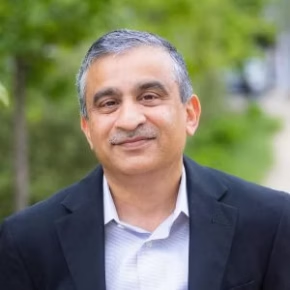Affiliations
- Executive Director
- Distinguished Professor of Biocomplexity
- Professor of Computer Science
Bio
Madhav Marathe is an endowed Distinguished Professor of Biocomplexity, Executive Director of the Biocomplexity Institute, and a tenured Professor of Computer Science at the University of Virginia. Dr. Marathe is a passionate advocate and practitioner of transdisciplinary team science. During his 30-year professional career, he has established and led many large transdisciplinary projects and groups. His areas of expertise include digital twins, network science, artificial intelligence, multi-agent systems, high-performance computing, computational epidemiology, biological and socially coupled systems, and data analytics.
His prior positions include Professor of Computer Science and Director of the Network Dynamics and Simulation Science Laboratory within the Biocomplexity Institute of Virginia Tech and a team leader of research and computing in the Basic and Applied Simulation Science Group, Computer and Computational Sciences Division at the Los Alamos National Laboratory. He is a Fellow of the American Association for the Advancement of Science (AAAS), Society for Industrial and Applied Mathematics (SIAM), Association for Computing Machinery (ACM), and Institute of Electrical and Electronics Engineers (IEEE). Dr. Marathe has published more than 500 articles in peer-reviewed journals, conferences, and workshops. Mentoring and training next-generation scientists has been his lifelong passion. He has mentored more than a dozen staff scientists, and (co)-advised more than 30 doctoral students, 20+ MS students, and 15 postdoctoral fellows.
Dr. Marathe and his team focus on developing the scientific foundations and the associated engineering principles to study large-scale biological, information, social, and technical (BIST) systems. His current interests span five broad themes: (i) methods to construct various BIST networks using partial and noisy data as well as procedural information; (ii) understanding the general form and structure of dynamical processes over BIST networks (e.g., key network/pathway properties and typical pathways that impact dynamics); (iii) algorithmic theory of optimization and control as it pertains to the dynamical processes, including methods to detect, enhance, arrest, and mitigate dynamics; (iv) general conceptual and algorithmic foundations to understand the co-evolution of the networks and dynamics; and (v) high-performance services-based computing solutions that can be delivered seamlessly to end users and policymakers.



